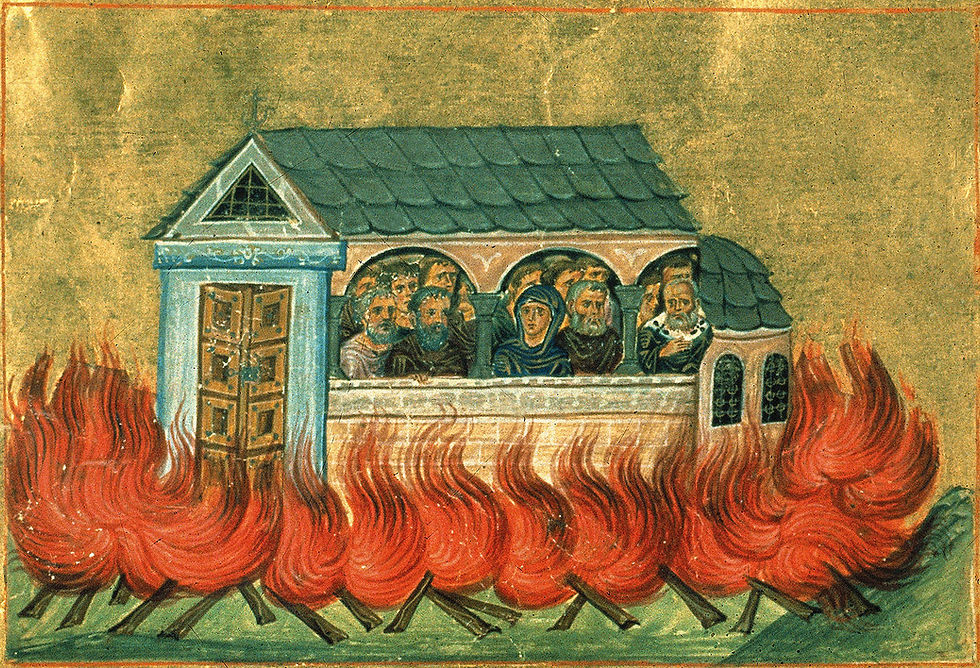Greening the City and Coronavirus
- Tim Boatswain

- May 2, 2020
- 3 min read
Updated: Mar 19, 2023
For the last three years, on behalf of the Civic Society, I have been organising a series of talks for the Council's Planning and Building Control department under the umbrella of the Planning Training programme: annually, three talks for planners and one for councillors.
With the climate change crisis and environmental issues, there is a recognition that our urban areas have lost touch with the natural world, creating health problems for city dwellers. This is a worldwide problem which is only likely to grow worse, if no action is taken, with forecasts that urban areas will have expanded across the world by more than 2.5 billion people by 2050. It, therefore, seemed very appropriate to make the theme of the talks for 2019-20, Greening the City.
If the question is asked, ‘why green the city?’, the answer in the modern jargon really is a ‘no brainer’. Here are the main arguments as to why it is important to green our cities:
improves the environment;
ensures rich biodiversity;
reduces air pollution;
ensures water storage;
dampens noise;
helps cooling down in warm periods;
essential for mitigating climate change crisis;
crucial for sustainability.
The next question is ‘how do you go about making a city greener?’ Here are some key things that need to be achieved:
electricity generation using renewable resources;
investment in public transportation;
encouraging cleaner cars and imposing emission standards;
pedestrianisation – more walking;
actions and policies to cut waste, reduce water consumption;
tree and vegetation planting programmes;
city government leads by example and encourages grassroots efforts.
The series of talks got off to a good start with a very interesting talk on The Landscape of the City by Johanna Gibbons of J & L Gibbons LLP. Unfortunately, the next two talks had to be postponed because of the General Election. Although there was a session for the councillors, in which John Milligan of Milligan Knight Architects (Trees in the City) and I (Re-greening the City) participated, the postponed talks for the planners could not be rescheduled as we were hit by the Covid-19 pandemic and the subsequent lockdown.
The Council, as many of you will know, has already recognised the Climate Change Crisis and has set up a cross-party Climate Crisis Response Working Group, which are developing ideas which do include greening St Albans and the District.
Furthermore, I have been invited, on behalf of the Civic Society and Conservation 50, to work with the Council and the Business Improvement District to revise and develop a new City Centre Vision. Much has happened since the last City Centre Vision for St Albans was published in 2009; for example, retail has undergone massive changes due to internet shopping and different spending patterns (as is evidenced by empty shops). St Albans needs to adapt and think to the future if the life of its centre and ‘high streets’ are to survive. A key element on any vision now should include environmental issues and greening!
There is now a unique opportunity, paradoxically caused by the Coronavirus emergency and lockdown, to expand radically the greening agenda and rebalance the city environment and alleviate many of the health issues that plague cities. These are my key things that should be
on the agenda:
the importance of a move away from car use in the city centre, while ensuring access to shops etc. - free ‘short-haul’ public transport;
need for pedestrian space - reclaim the public realm for people - to reduce the risk of infections now and in the future but also for comfort and access - pedestrianise the city centre.
importance of clean air to improve human experience and health - move to sustainability;
need to support local businesses - a shift to localism providing resilience for the community (in the face future crises);
a more socially useful economy that protects small traders and local entrepreneurs;
quality green spaces for relaxation, congregation and mental well being - think about an urban forest;
creating space for wildlife for diversity, engagement and relaxation - mental health;
urban planning based on social needs - so that high streets have a societal objective, as well as a commercial mission, and are not just left to market forces.
As we move into recovery from Coved-19 let’s be bold and seize the opportunity to make radical changes to the way our city centre operates and the way we live.
Professor Tim Boatswain is a Fellow of the Institute of Place Management
Chairman of St Albans Civic Society
Chairman of Conservation 50 (St Albans)
Chairman of Blue Plaques St Albans




Comments